1. First Blockbuster – Dallas, Texas (1985)
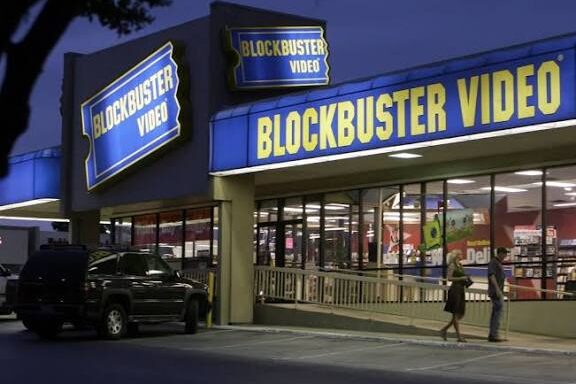
Some places define more than just a business, they capture moments in time. From the very first burger joints and video rental shops to the last survivors of fading traditions, these “firsts” and “lasts” remind us of how quickly the world changes, and how much we still treasure the memories.
The story of Blockbuster began in Dallas in 1985, where the very first store opened its doors with more VHS tapes than most people had ever seen in one place. Unlike small, cluttered mom-and-pop shops, Blockbuster offered brightly lit aisles, categorized shelves, and a computerized system that tracked rentals, a cutting-edge idea at the time. Founder David Cook built the store to handle thousands of titles, giving families and movie lovers a place that felt almost like a library of entertainment. The Dallas store quickly became the model for what would grow into more than 9,000 locations around the world. Though it eventually closed in the 1990s, its opening signaled a new era in home entertainment, one that brought Friday night movie runs into households everywhere. Fun Fact: The first movie ever rented there was the 1985 crime drama The Cotton Club.
2. Last Blockbuster – Bend, Oregon
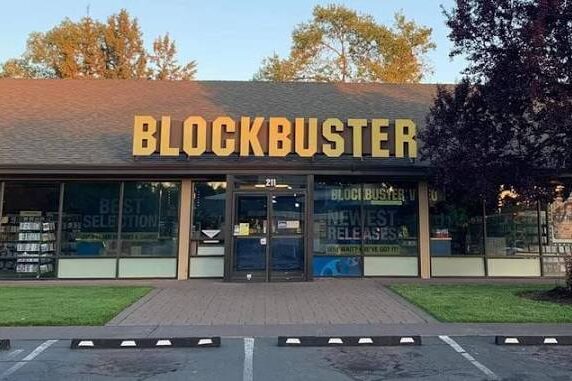
Long after the rise of streaming platforms made video rentals obsolete, one Blockbuster has refused to fade away. In Bend, Oregon, the last operating Blockbuster continues to rent movies, stock candy, and even sell T-shirts that celebrate its status as the final survivor. For locals, it’s still a practical place to grab a DVD on a weekend night. For tourists, it’s a nostalgic trip back to the ’90s, with rows of DVDs and the familiar blue-and-yellow signs that once dominated neighborhoods everywhere. At one point, the store even partnered with Airbnb to let guests spend the night inside, complete with beanbag chairs, retro candy, and unlimited movie rentals. While it may be the last of its kind, the Bend Blockbuster has become more than just a rental store, it’s a living museum of pop culture history. Fun Fact: The Airbnb sleepover sold out within hours of being announced.
3. First Drive-In Theater – Camden, New Jersey (1933)

The drive-in movie theater was born in Camden, New Jersey, when Richard Hollingshead tested a quirky idea in his backyard by pinning a white sheet to trees and projecting films onto it. By 1933, he opened the world’s first official drive-in theater, charging 25 cents per car plus 25 cents per person, and accommodating more than 400 vehicles. Families loved the chance to enjoy films without leaving the comfort of their own cars, making it easier for parents with small children to have a night out. The novelty caught on quickly, spreading across the country as a quintessential American pastime. While the original site eventually closed in the 1940s, Hollingshead’s creation shaped decades of entertainment under the stars. Fun Fact: His patent for the drive-in theater was so unique that he even considered weatherproof speakers to enhance the experience.
4. Last Drive-In Theater in New York – El Rancho, Palatine Bridge
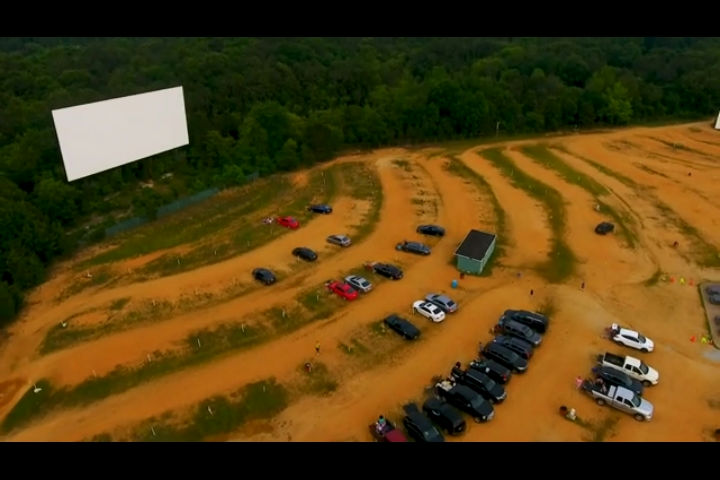
In upstate New York, El Rancho Drive-In holds the title of the state’s last remaining drive-in theater. Open during the warmer months, it screens double features where audiences tune in through FM radio and settle into lawn chairs, truck beds, or hatchbacks to enjoy the show. Unlike the polished multiplexes of today, El Rancho still has a cozy, community feel, where neighbors catch up over chili dogs at the concession stand and kids play tag before the movie starts. It’s a rare reminder of a simpler time when summer evenings meant headlights flickering on as cars lined up to watch films under the open sky. The tradition has endured here, keeping alive the spirit of drive-in theaters for generations of families. Fun Fact: The homemade chili dogs sold at El Rancho have been a crowd favorite since the 1960s.
5. First Kmart – Garden City, Michigan (1962)
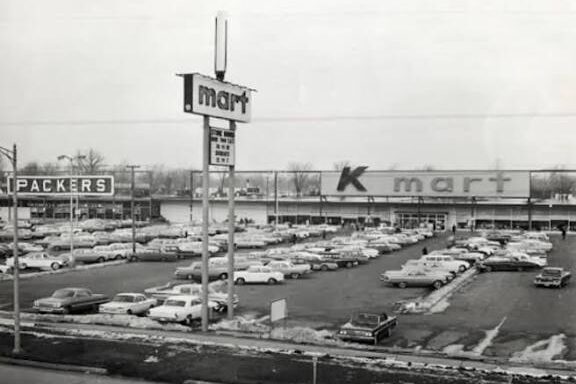
When the first Kmart opened in Garden City, Michigan, in 1962, it marked the beginning of a retail giant that would redefine discount shopping in suburban America. The store introduced wide aisles filled with affordable clothing, appliances, and household goods, but what really set it apart was the now-legendary “Blue Light Special.” A flashing blue siren would signal spontaneous discounts, drawing crowds eager to snag a bargain. This first store set the tone for rapid growth, expanding into more than 2,000 locations at its peak. For many families, weekend trips to Kmart became a tradition, with shoppers browsing everything from toys to gardening supplies in one place. Although the Garden City building was demolished in 2014, its legacy remains as the spark that launched one of the most recognizable names in American retail history. Fun Fact: The very first Blue Light Special was for discounted ladies’ scarves.
6. Last Kmart – Miami, Florida
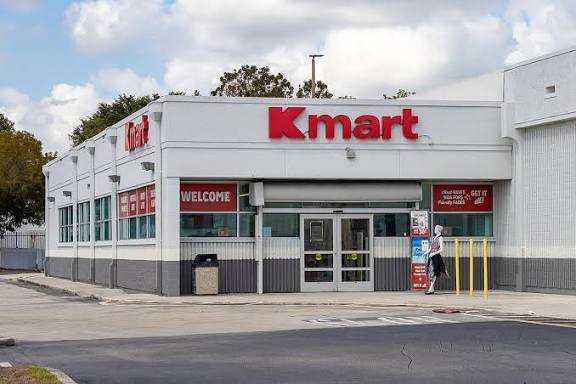
The final Kmart on the U.S. mainland sits quietly in Miami, Florida, as a shadow of the once-mighty chain that boasted thousands of stores. Inside, the shelves are thinner, the crowds are smaller, and the iconic Blue Light Special is gone, yet for many longtime shoppers, the nostalgia is enough to keep them coming back. The Miami store still has its familiar red “K” logo outside, a reminder of an earlier era of American retail. Beyond the mainland, a handful of Kmarts remain in places like Guam and the Virgin Islands, but this Florida location represents the last link stateside. It may not have the energy it once did, but the smell of popcorn still lingers from the in-store snack counter, a small tradition that has survived the years. Fun Fact: That same popcorn counter continues to serve shoppers, just as it did in the 1980s.
7. First Sears Department Store – Chicago, Illinois (1925)

Sears was already a household name thanks to its mail-order catalog, but in 1925 it expanded into a new kind of retail by opening its first department store in Chicago. This 12-story building was filled with just about everything a customer could need, from clothes and furniture to chicken coops and farm tools. It became a model for what the modern department store could be, giving shoppers the convenience of finding all their essentials under one roof. For many families, Sears was more than a store; it was a place to dream, offering everything from everyday items to entire house kits that could be ordered by mail. While that first Chicago location closed in 1974, its opening marked a major shift in how Americans shopped during the 20th century. Fun Fact: Sears sold thousands of complete house kits, shipped with all the lumber, nails, and instructions to build your own home.
8. Last Sears – Concord, California
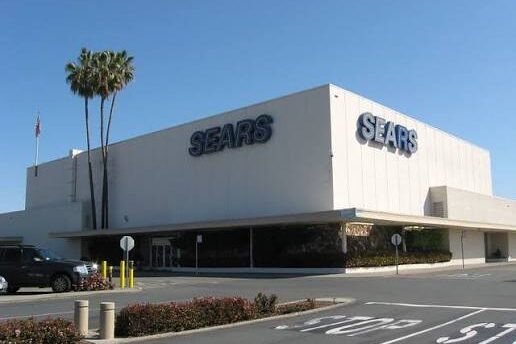
Today, only a handful of Sears stores remain, and the one in Concord, California, continues to serve customers in a quiet, half-empty mall. Once a bustling hub for back-to-school shopping and family outings, the store now feels more like a time capsule. The escalators still carry shoppers up and down, but many sections of the building are blocked off or sparsely stocked. Still, loyal customers wander through the aisles, browsing Craftsman tools or picking up basic clothing, clinging to the memories of when Sears was at the heart of American retail life. Though its presence has shrunk dramatically, the Concord location stands as a testament to a company that once revolutionized shopping and made nearly anything, even a house, available for purchase. Fun Fact: The Craftsman tool line, first introduced by Sears in 1927, is still sold here today.
9. First McDonald’s – San Bernardino, California (1940)
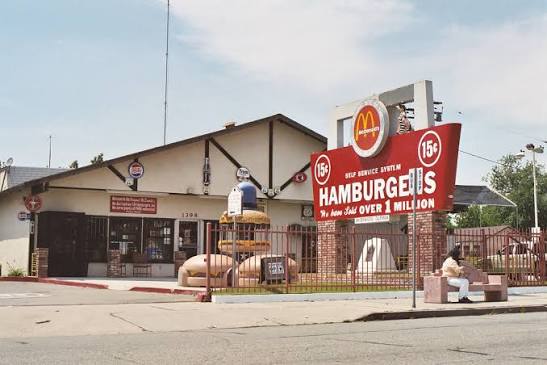
In 1940, brothers Richard and Maurice McDonald opened a small drive-in restaurant in San Bernardino, California, that would change the way people eat forever. Their “Speedee Service System” streamlined food preparation, delivering burgers, fries, and shakes faster than anyone else at the time. Instead of a long menu, they kept things simple, focusing on a handful of items served quickly and consistently. This efficient model became the foundation of the fast-food industry as we know it today. Although the original building no longer stands, a museum now marks the spot where the golden arches were first imagined. The San Bernardino location proved that speed, low prices, and consistency could win over customers nationwide. Fun Fact: Before Ronald McDonald ever appeared, the restaurant’s first mascot was “Speedee,” a cartoon chef with a hamburger-shaped head.
10. First Howard Johnson’s – Quincy, Massachusetts (1925)
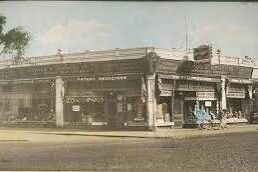
Howard Johnson’s began as a modest soda fountain in Quincy, Massachusetts, where Howard himself sold rich, flavorful ice cream that was creamier than what competitors offered. Its popularity grew so quickly that by 1925 he expanded into a full-service restaurant. Known for its bright orange roofs and simple menus, Howard Johnson’s became a comforting stop for travelers, especially during the rise of America’s highway system. By the 1960s, it had grown into the largest restaurant chain in the country, with more than 1,000 locations serving fried clams, hot dogs, and, of course, ice cream. The first Quincy restaurant paved the way for this nationwide success, making “HoJo’s” a household name for generations of families on road trips. Fun Fact: The most popular ice cream flavor at the original Quincy shop was orange-pineapple, a local favorite.
11. Last Howard Johnson’s – Lake George, New York (Closed 2022)
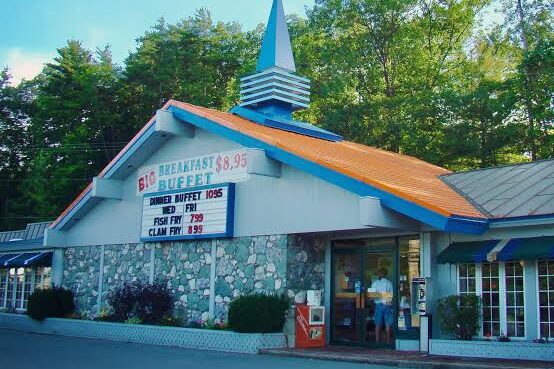
For decades, Howard Johnson’s was a staple of roadside dining, but its long chapter came to a close in 2022 when the last remaining restaurant in Lake George, New York, shut its doors. For years, this location had been a nostalgic stop for both locals and travelers, serving the chain’s signature fried clam strips and ice cream in a setting that hadn’t changed much since the 1960s. The orange roof and retro dining booths made it feel like stepping back in time, even as the rest of the country moved on to newer chains. Its closure marked the end of an American icon that once defined family road trips and vacation stops. Fun Fact: The Lake George location’s most requested ice cream flavor was butter pecan, a classic that never lost its appeal.
12. First Starbucks – Pike Place Market, Seattle (1971)
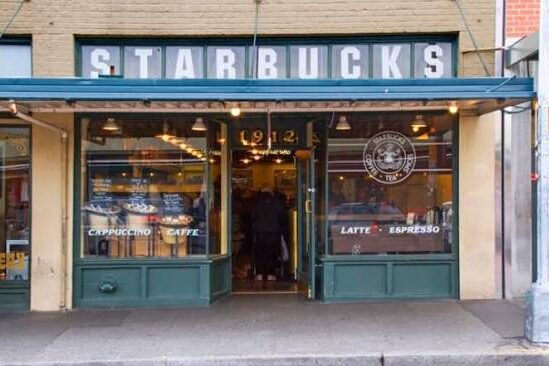
The very first Starbucks opened in Seattle’s Pike Place Market in 1971, though it looked very different from the coffee shops people know today. At first, it sold only coffee beans, tea, and brewing equipment, no lattes, frappuccinos, or comfy chairs. The founders wanted to give people access to high-quality coffee they could brew at home, and the shop’s earthy wooden décor reflected that vision. Over time, Starbucks expanded into serving drinks, creating the global coffeehouse culture we now take for granted. Yet the original Pike Place store remains a pilgrimage spot for coffee lovers from around the world, still bearing its early logo featuring a two-tailed mermaid. Fun Fact: That original logo was far more detailed, even featuring a bare-breasted mermaid before it was simplified for modern branding.
13. Last Original Dairy Queen Brazier – Moorhead, Minnesota

In Moorhead, Minnesota, one Dairy Queen stands out as a true holdover from another era. Known as a “Brazier” location, it still serves burgers, fries, and sundaes much like it did when it opened in 1965. While most DQs have modernized their menus and storefronts, this one has resisted changes, preserving its retro charm and making it a favorite for both locals and tourists. Families gather here each summer for cones dipped in chocolate and sundaes topped with bright red cherries, enjoying the same treats their parents and grandparents once had. It’s not just a restaurant, it’s a community landmark that has outlasted countless trends. Fun Fact: The shop is owned by the family of Minnesota state legislator Troy Larson, who grew up working there.
14. Last Typewriter Repair Store – California Typewriter, Berkeley, California

California Typewriter in Berkeley is one of the few remaining shops in America dedicated to keeping typewriters alive. The store repairs and restores vintage machines for writers, collectors, and enthusiasts who prefer the satisfying clack of keys to the silence of laptops. While typewriters are no longer mainstream, they’ve found a passionate following among artists and traditionalists who appreciate their mechanical beauty and permanence. The shop itself has become a gathering place for this community, even inspiring a documentary that highlighted its role in preserving a fading art. Fun Fact: Actor Tom Hanks, a devoted typewriter fan, owns more than 250 machines and has sent some of them here for repairs.
15. Last Lamp Repair Shop – Grand Brass Lamp Parts, New York City
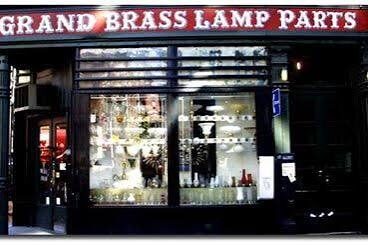
Tucked away in New York City, Grand Brass Lamp Parts has been keeping the light on for over a century by specializing in lamp repairs and vintage parts. While most people today replace broken lamps with a quick online order, this shop still restores fixtures from decades past, everything from delicate stained-glass Tiffany lamps to mid-century desk lights. The walls are lined with drawers of tiny screws, sockets, and glass shades, many of them original parts dating back generations. Customers come not just for repairs, but also to preserve family heirlooms or restore antiques that can’t be replaced. In an age of disposable products, Grand Brass offers a rare blend of craftsmanship and history. Fun Fact: Some of the lamp parts used here date all the way back to the 1920s.
16. Last Payphone in Anchorage, Alaska
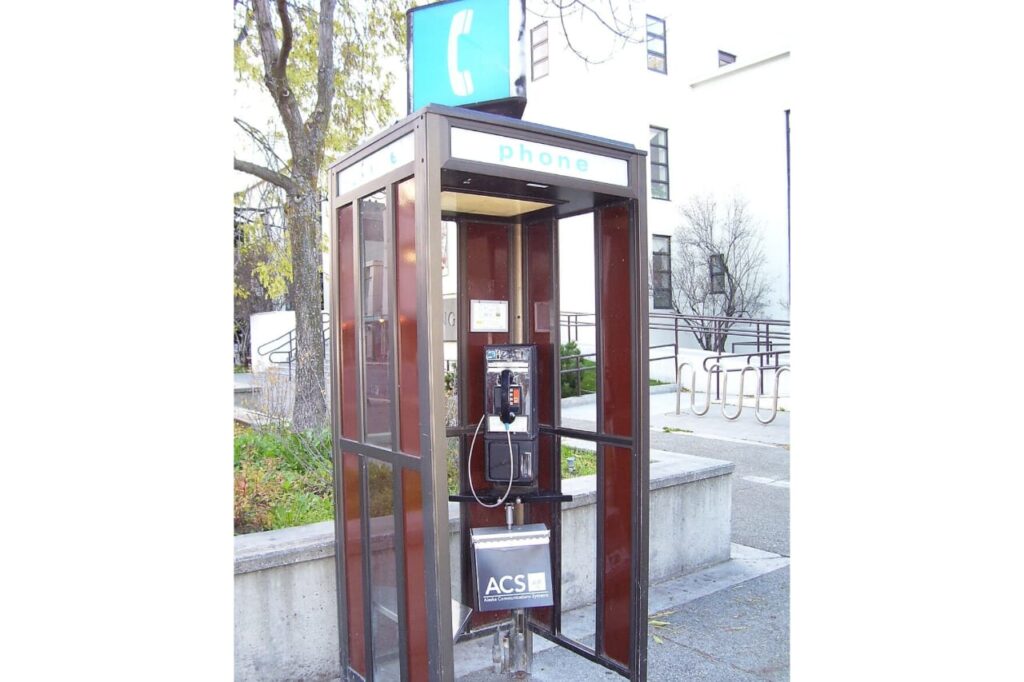
Anchorage, Alaska, is home to a quirky relic of the pre-cell phone era: the city’s last working payphone. While once a common sight on every corner, payphones have nearly vanished in the age of smartphones, making this lone booth a surprising holdout. Locals and visitors alike stop by to snap photos, and some even drop in a few coins just for the novelty of hearing the dial tone. For older generations, it’s a reminder of waiting in line to call home or fishing for quarters in your pocket. For younger ones, it’s a chance to see technology they’ve only heard about. Fun Fact: The booth still costs 50 cents for a local call, a price frozen in time compared to today’s mobile plans.
From the very first McDonald’s to the very last Blockbuster, these places tell a story of how America shops, eats, plays, and connects. Visiting them, or simply remembering them, is like opening a time capsule filled with the sights, sounds, and flavors of the past.
This story 16 Firsts and Lasts of Iconic Places We’ll Never Forget was first published on Daily FETCH


